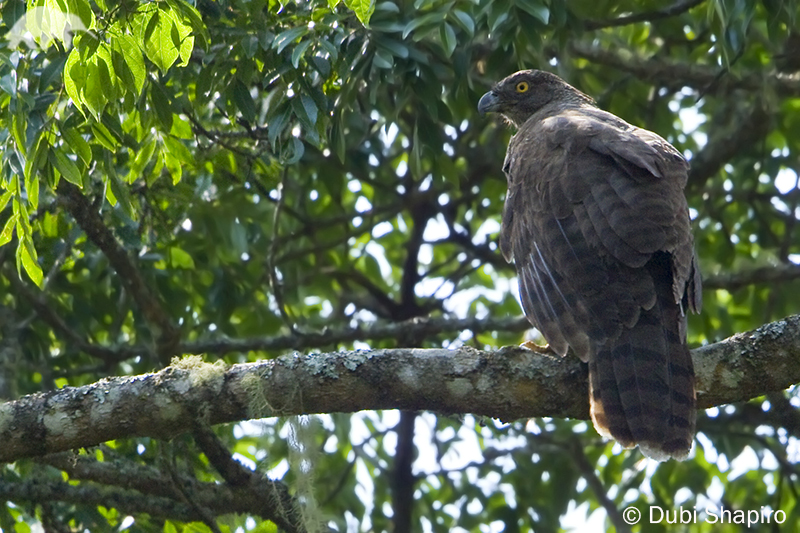About
The Madagascar Serpent-eagle is one of the rarest birds of prey in the world.
Despite its name, the Madagascar Serpent-eagle mainly feeds on chameleons and geckos. Snakes make up only a tiny proportion of the bird’s diet. Endemic to Madagascar, its forest habitat is becoming increasingly depleted and fragmented. For many years it was doubted whether the species still survived in the wild, until it was recently rediscovered by Peregrine Fund biologists after six decades of absence. The use of playback techniques has demonstrated that the species is in fact not as rare as previously thought, resulting in it being downgraded from critically endangered to endangered. This is great news, however its population continues to decline as it suffers the devastating effects of rapid deforestation. The primary reasons for deforestation and subsequent habitat destruction, is the extensive clearance for subsistence slash-and-burn agriculture and also commercial logging activities. They are also prone to the effects of climate change; as much as 94% of its ecological niche could be lost to climate change over the 50 year period from 2000-2050.
- Order: Accipitriformes
- Family: Accipitridae
- Population: 375-1,499
- Trend: decreasing
- Size: 66cm
- Weight: 700-800g
EDGE Score
Distribution
Eastern rainforests of Madagascar, from Zahamena in the south to Marojejy in the north.
Habitat and Ecology
This species’ can be found in lowland and mid-altitude primary rainforest up to 1,000m above sea level. Predominantly a forest dweller, it rarely ventures beyond the forest edge. Chameleons and geckos are the prey animals of choice, with lemurs, lizards, frogs and snakes also being preyed upon.
